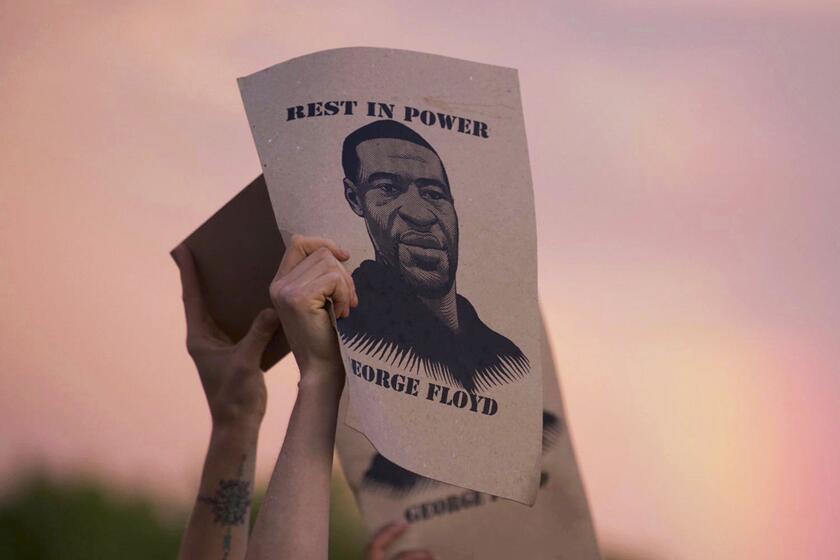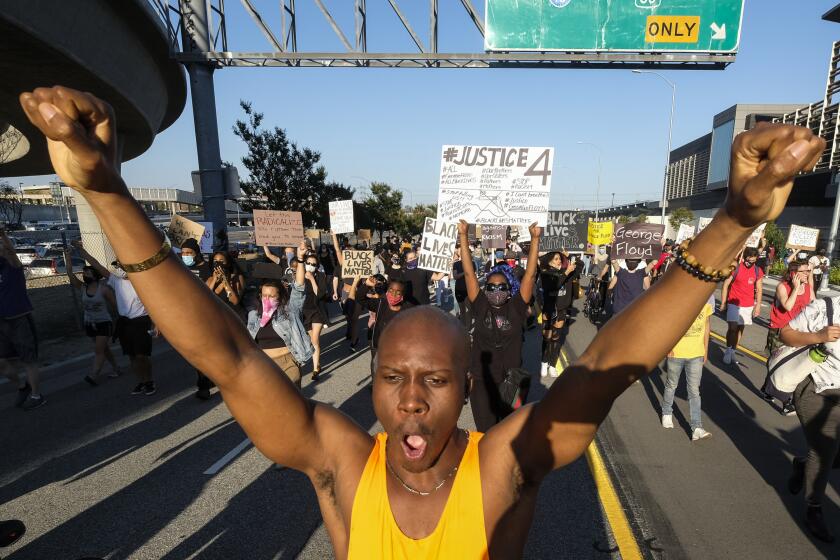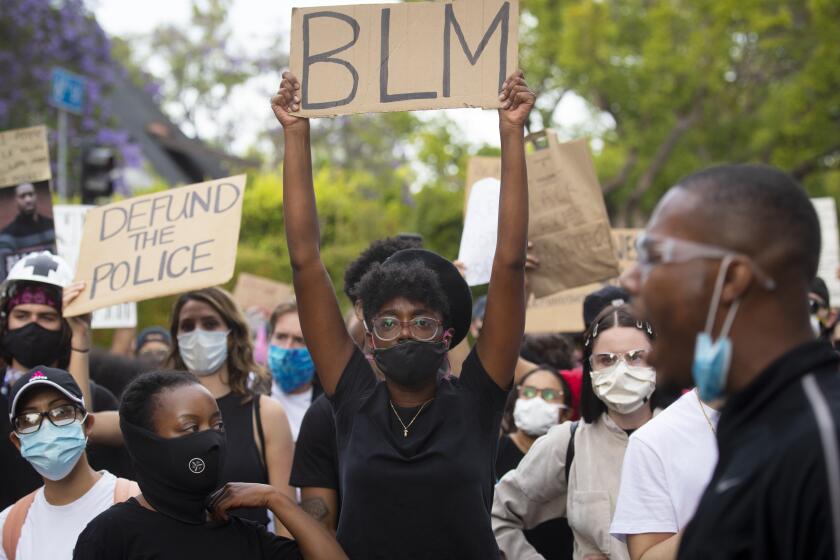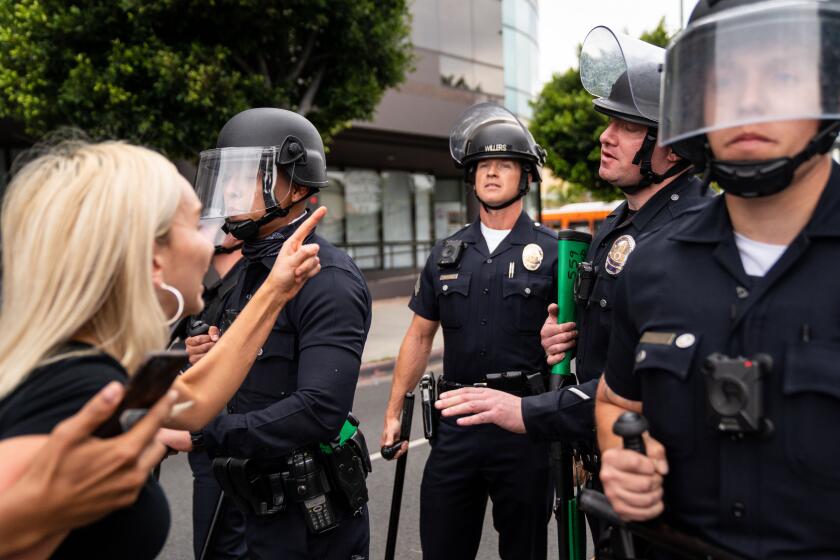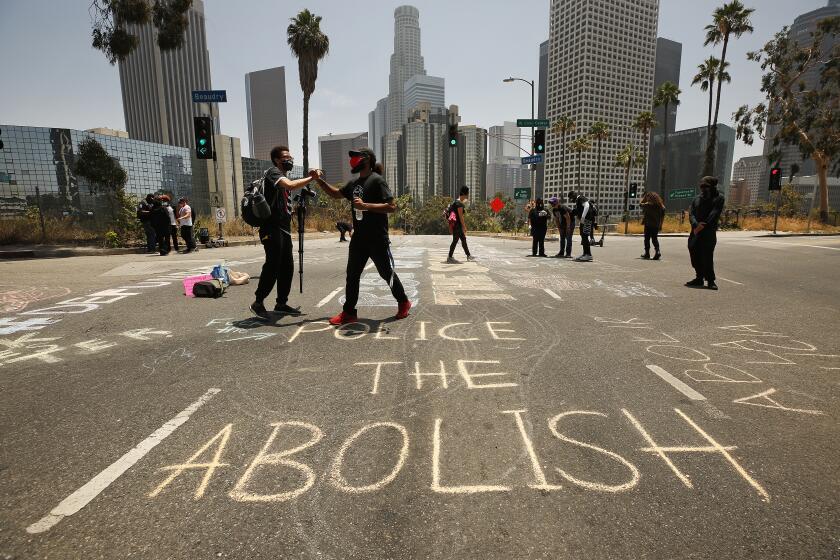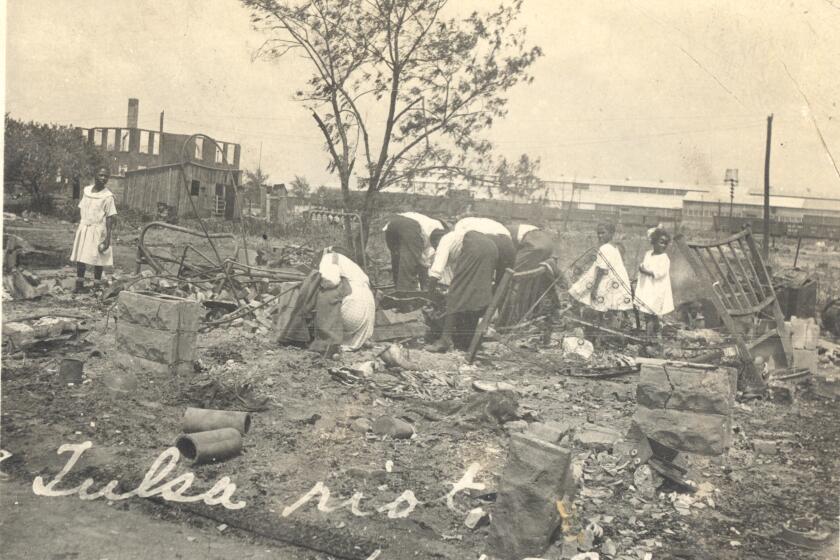Editorial series: Reckoning with the murder of George Floyd
A look at what has changed — and what hasn’t — in the year since George Floyd’s death.
George Floyd’s 2020 death turned a traumatic year into a national self-examination of racism, justice and policing. But what has come of it?
Floyd’s killing and an officer conviction make insufficient headway against police violence because the nation’s racial and policing problems have less to do with illegal police conduct and more to do with reprehensible conduct that lawmakers, the courts and the Constitution have made perfectly legal.
Recent demonstrations — exemplified by those that followed the murder of George Floyd — have spawned a backlash undermining the fundamental right to protest.
For too long the police have been treated as the primary remedy to public safety problems.
L.A.’s law enforcement agencies are among the nation’s most “reformed,” but they still engage in excessive force and other misconduct.
One response to George Floyd’s death was rejection of police reform, which, opponents argued, only perpetuates a racist system. Still, reform is needed.
In 1921 a white mob rampaged through the Black Tulsa neighborhood of Greenwood, killing scores and destroying 25 square blocks of businesses and homes. The past is not really past.
